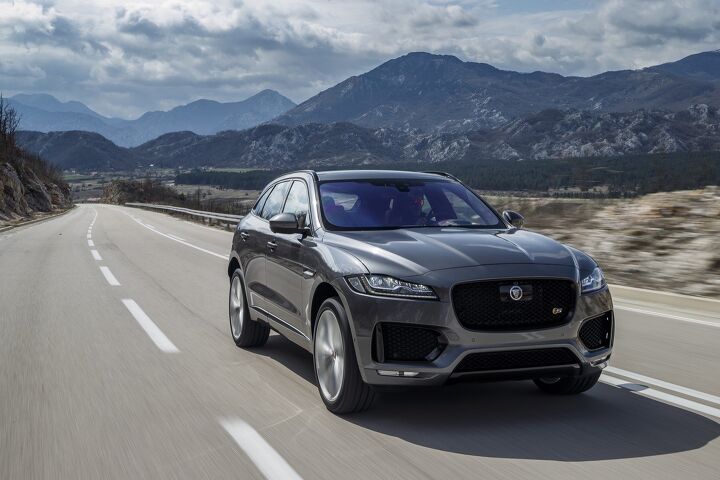Don't Say You Saw This Coming: Jaguar Now Earning 11 Percent of U.S. Volume With Diesel
Jaguar’s U.S. sales averaged 3,400 units per month over the last year, a huge turnaround after a decade in which Jaguar’s U.S. dealers sold roughly 1,200 cars per month.
Most of the credit for Jaguar’s U.S. resurgence belongs to the brand’s first-ever utility vehicle, the F-Pace.
A fair chunk of the credit also belongs to the XE, the first entry-level sedan in Jaguar’s lineup since the X-Type disappeared after the 2008 model year.
And some of the credit belongs to an engine formula that’s earned more than its fair share of negative press over the last two years: diesel.
During the first half of 2017, diesel-powered models accounted for 11 percent of Jaguar’s U.S. volume, up from nil in the first-half of 2016.
Just as the F-Pace pieces together the largest swath of Jaguar buyers, so too the F-Pace earns the lion’s share of diesel sales at Jaguar. Of the 2,251 diesel-powered Jaguars sold in the United States in the first six months of 2017, 1,368, or 61 percent, have been of the F-Pace variety.
Jaguar also sold 258 copies of the XF with a diesel engine. Jaguar’s monthly sales report breaks down the XE’s diesel sales even further: 274 of the 625 XE diesels sold were rear-wheel drive.
Though long a diesel player in the executive car market across the pond — you’ll recall Jeremy Clarkson’s range test on Top Gear’s series 12 in a Jaguar XJ — Jaguar and diesel hardly go together in the mind of the American luxury car buyer.
Moreover, Clarkson’s diesel was a six-cylinder twin-turbo unit that shifted the big XJ from nought to 60 in less than eight seconds.
The diesel Jaguar is utilizing in its North American lineup, on the other hand, is a 180-horsepower 2.0-liter four-cylinder. Torquey? Sure. But in the midsize Jaguar sedan, the XF, Car And Driver says the diesel doesn’t exactly produce impressive forward progress. 60 mph comes up in, wait for it, keep on waiting…
8.7 seconds.
On the plus side, while Jaguar demands a $1,500 premium for diesel powerplants in the XE and XF sedans, diesel is the far more economical route in the wildly more popular F-Pace. The diesel F-Pace is $4,210 less costly than the next most affordable F-Pace.
Also distinguishing diesels at Jaguar is the dearth of available oil burners at former diesel players in America’s luxury category. There are presently no diesel engines in the lineup of Audi and Mercedes-Benz. This is now a fight between Jaguar and BMW. According to HybridCars.com, BMW has sold 2,159 diesel-powered vehicles this year.
With 2,251 diesel-powered Jaguars sold already in 2017, diesel Jags are nearly twice as common as XJs and very nearly as popular as the F-Type.
[Image: Jaguar Land Rover]
Timothy Cain is a contributing analyst at The Truth About Cars and Autofocus.ca and the founder and former editor of GoodCarBadCar.net. Follow on Twitter @timcaincars.
More by Timothy Cain
Latest Car Reviews
Read moreLatest Product Reviews
Read moreRecent Comments
- Redapple2 Dear lord ! That face. HARD NO.
- Urlik Let’s ban for all. Having that data anywhere leaves it open to the Chinese government potentially hacking systems to get the data.
- Redapple2 Gen 1 - 8/10 on cool scale.Gen 2 - 3/10.
- SCE to AUX "...to help bolster job growth and the local economy"An easy win for the politicians - the details won't matter.
- Kjhkjlhkjhkljh kljhjkhjklhkjh so now we will PAY them your tax money to build crappy cars in the states ..



































Comments
Join the conversation
Jaguar? Who cares. Let's talk toothpaste brands...
It just gets unjaguarish at the gas bar where you have to lineup for fewer pumps with commercials. Watch out for diesel-glove on those Gucci's...